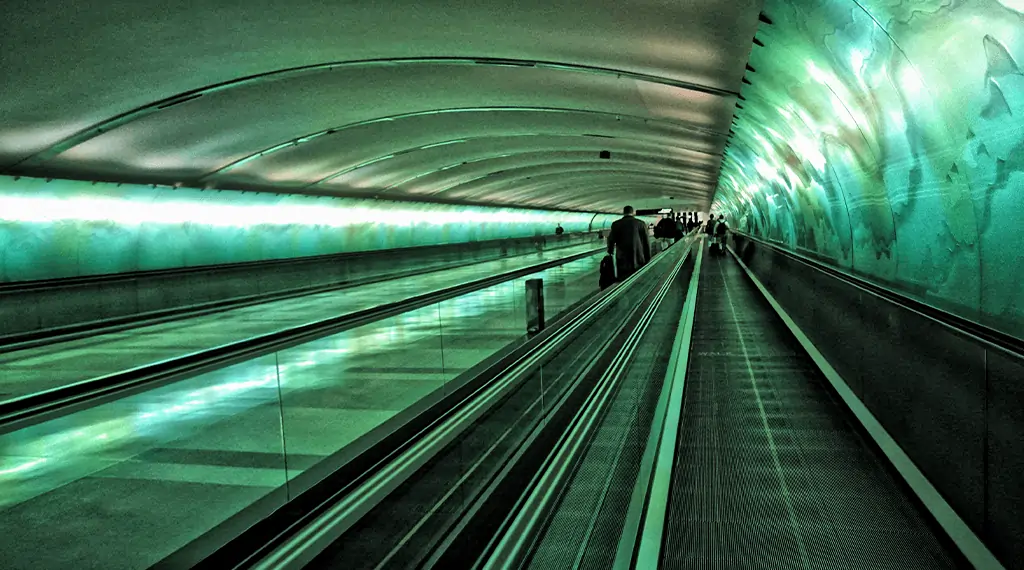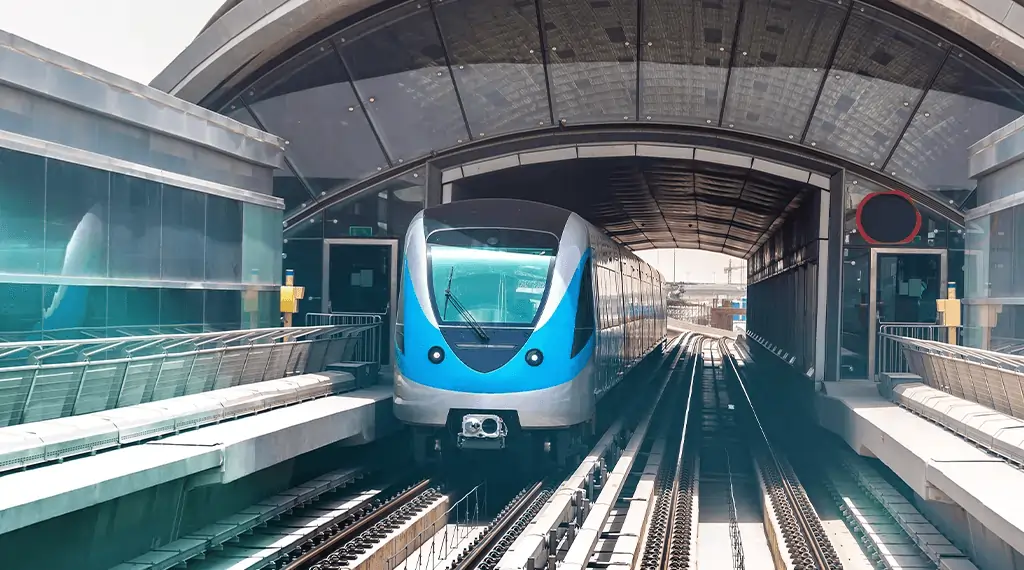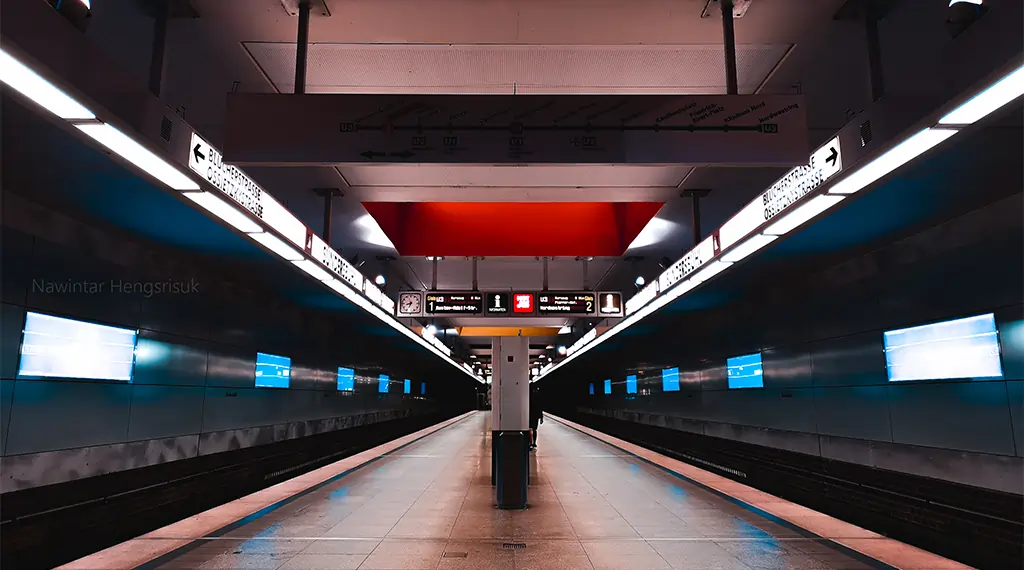
The AIIMS Metro Station stands as one of Delhi’s busiest and most vital stations, located on the prominent Delhi Metro Yellow Line. Serving millions of commuters annually, this metro station has earned its place as an essential lifeline for patients traveling to the renowned All India Institute of Medical Sciences (AIIMS Hospital). Beyond its role in healthcare connectivity, it plays an equally important function in boosting trade, education, and social accessibility by acting as a hub for South Delhi and Gurgaon-bound travelers.
For years, road traffic congestion made it difficult for patients and doctors to reach AIIMS efficiently. However, with the presence of the AIIMS Metro Station, healthcare access and mobility have been simplified dramatically. Today it is not just a point of boarding; it is the lifeline connecting Delhi’s healthcare system with the masses. The station exemplifies comfort with modern facilities like elevators, escalators, ATMs, and digital fare systems—all integrated for smooth functioning.
History of AIIMS metro station Yellow Line
The AIIMS metro station Yellow Line holds a strategic role in Delhi Metro’s vast network. It was launched in 2010 under the much-awaited Phase II expansion project, which targeted connectivity towards healthcare and education hubs of South Delhi. Before this addition, patients arriving from North and Central Delhi had to face time-consuming road journeys, often resulting in delays in critical treatment schedules.
Since becoming a key part of the Delhi Metro system, the AIIMS metro station Yellow Line transformed the area into a dynamic, accessible zone. Not only did it minimize travel times for hospital visitors, but it also increased commercial opportunities by connecting South Delhi to business hubs like Rajiv Chowk and Gurgaon. This opening marked a significant infrastructural milestone, proving how public transit investment directly benefits healthcare and socio-economic frameworks.
Location Advantage of AIIMS Delhi Metro
The AIIMS Delhi Metro station offers unmatched geographical convenience. Located on Aurobindo Marg in South Delhi, it seamlessly connects to both AIIMS and Safdarjung Hospital, which are two of India’s leading medical institutions. For commuters, it provides an easy bridge to residential areas such as Green Park, Hauz Khas, and South Extension, while also maintaining accessibility to large commercial zones like Connaught Place.
Another location advantage of the AIIMS Delhi Metro station is its integration with other public transport systems. DTC buses, cab services, and auto rickshaws are available from outside the gates, completing last-mile connectivity. This prime location makes the station an anchor for patients from different states, doctors rushing to medical duties, and students attending nearby institutions.
AIIMS metro station entry gates Explained
The AIIMS metro station entry gates are intelligently designed to channel the heavy daily footfall in an orderly way. Each gate serves a different part of the surrounding neighborhood but ultimately makes hospital access highly convenient. Gate No 4, in particular, is the most preferred entry for hospital visitors as it drops passengers right next to AIIMS.
Beyond directional convenience, these AIIMS metro station entry gates also include accessibility features such as escalators, wide staircases, and wheelchair ramps. Signage boards are displayed at each point to help new commuters navigate the surrounding area properly. Together, these entry gates balance both efficiency and inclusivity in day-to-day operations.
Significance of AIIMS Metro Station Gate No 4
Among all entry gates, AIIMS Metro Station Gate No 4 is the busiest and most significant. It provides direct and shortest connectivity to AIIMS Hospital, making it ideal for patients and attendants rushing for appointments or emergencies. The convenience of walking straight into the hospital campus without navigating busy roads remains a defining advantage.
Moreover, AIIMS Metro Station Gate No 4 also opens routes leading towards Safdarjung Hospital and various auto-rickshaw stands nearby. Due to its heavy use, the gate is equipped with tight security and extended space for smooth passenger flow even during peak rush. It has emerged as the single most reliable and effective way to access medical facilities directly from metro transport.
Passenger Comfort with AIIMS metro station facilities
Commuters at this station benefit from a broad range of AIIMS metro station facilities, developed to make their journey hassle-free. Whether one needs token vending machines, smart card top-up counters, or customer assistance, these facilities ensure no commuter struggles with ticketing. Chairs and waiting spaces inside the concourse provide relief for patients who may need time before resuming their journey.
On top of that, the AIIMS metro station facilities are not just about comfort but also about survival needs. Clean drinking water booths, well-maintained washrooms, ATMs, food kiosks, and information counters function round-the-clock. For critical cases arriving at odd hours, emergency medical help is also readily available. These amenities prove that the station embodies the principle of service first.
Importance of AIIMS metro station first last train timings
Knowing the AIIMS metro station first last train timings is a vital necessity for the passengers that depend on the hospital’s services. The early morning train schedule helps doctors, paramedics, and staff working night shifts to reach AIIMS without delay. Similarly, patients scheduled for early-morning admissions often rely on the first train to avoid costly taxi rides.
On the flip side, the AIIMS metro station first last train timings during late hours ensures patients and attendants leaving after night consultations or extended hospital stays get home safely without relying on expensive alternatives. Many working professionals also align their schedules to these timings to maintain punctuality. A clear timetable makes the entire system organized and predictable.
Travel Planning using AIIMS metro station route
The AIIMS metro station route is central to almost every commuter connecting between Central Delhi and Gurgaon. Positioned on the Yellow Line, the station provides uninterrupted connectivity to frequently accessed hubs such as Kashmere Gate, New Delhi Railway Station, Rajiv Chowk, and Huda City Centre. The ease of direct travel saves time while avoiding congested roads.
For occasional visitors or tourists, the AIIMS metro station route helps them reach places like Qutub Minar, Central Secretariat, and Hauz Khas, making AIIMS an anchor for tourism as well. The map is simple enough to follow for newcomers, ensuring they can plan trips confidently without assistance.
Using AIIMS metro station map for Easy Navigation
A huge aid for first-timers is the AIIMS metro station map, which is strategically displayed across concourses and platforms. These maps outline the entire Yellow Line along with interchange stations, helping passengers avoid confusion when traveling long distances. People new to Delhi often find these maps to be their biggest help against travel anxiety.
Additionally, the AIIMS metro station map is digitized through mobile apps, making route planning even more efficient for smartphone users. Highlighted interchange points like Rajiv Chowk, New Delhi, and Central Secretariat are marked upfront to minimize confusion. This further reduces travel time and enhances commuter confidence.
Connectivity from AIIMS Metro Station to AIIMS Hospital
The direct connectivity from AIIMS Metro Station to AIIMS Hospital is the biggest motivator for millions of annual passengers. The short walking distance and exit through Gate No 4 minimizes travel obstacles for patients with mobility issues. For international visitors, information counters and sign boards in English help them move straight toward the hospital without language barriers.
Practical arrangements like wheelchair access, standby ambulances, and direct signage ensure convenience for both patient emergencies and routine healthcare visits. This seamless connectivity between AIIMS Metro Station to AIIMS Hospital underscores why this station sees its extremely high daily ridership.
Nearby Metro Station – AIIMS Metro Station
The AIIMS Metro Station is located on the Yellow Line of the Delhi Metro and is surrounded by several important stations that make commuting smooth for passengers. Directly adjacent to it are INA Metro Station (towards central Delhi) and Green Park Metro Station (towards south Delhi). These nearby stations ensure easy access to shopping centers, healthcare institutions, residential colonies, and cultural landmarks. Passengers heading to AIIMS often find these nearby stops equally useful for connecting routes.
Connectivity of AIIMS Metro Station
- AIIMS
- Green Park
- Hauz Khas
- Malviya Nagar
- Saket
- Chhatarpur
- Sultanpur
- Ghitorni
- Arjan Garh
- Guru Dronacharya
- Sikanderpur
- MG Road
- IFFCO Chowk
- HUDA City Centre
The Yellow Line is one of the busiest corridors and connects AIIMS Metro Station directly to many commercial, historical, and healthcare hubs. Towards its north, commuters can reach Kashmere Gate, Chandni Chowk, and Delhi University, while towards the south, they can travel to Gurgaon, Sikanderpur, and HUDA City Centre with ease.
The nearby stations INA and Green Park are especially important. INA Metro Station opens access to the bustling INA Market and Dilli Haat, while Green Park Station connects to popular colonies, shopping strips, and Hauz Khas area. Together with AIIMS Metro Station, these nearby stops serve as essential transit points on the Yellow Line ensuring easy city-wide connectivity.
AIIMS metro station accessibility Options
One of the most commendable aspects of the metro is the emphasis on AIIMS metro station accessibility for vulnerable groups. Elevators, ramps, wheelchair-accessible passageways, and tactile tiles for the visually impaired ensure maximum inclusivity. Station staff are also specially trained to assist differently-abled passengers wherever required.
This setup makes AIIMS metro station accessibility not just functional but also humane. By turning the environment user-friendly, Delhi Metro reinforces its dedication to equality in public transport. Each accessibility feature plays an essential role in making travel at AIIMS Metro stress-free, inclusive, and dignified.
Shopping Near AIIMS Delhi Metro
One of the most attractive aspects of the AIIMS Delhi Metro station is the variety of shopping destinations in its proximity. Just a short ride or even walking distance from the station, vibrant markets like South Extension, INA Market, and Lajpat Nagar offer endless opportunities for shoppers. From high-street fashion outlets to street vendors selling traditional clothes and accessories, the entire area buzzing around AIIMS Metro reflects Delhi’s energetic commercial culture. For visitors traveling alongside patients or students in the region, these markets provide accessible getaways to purchase essentials or enjoy high-end retail therapy.
Apart from fashion, the AIIMS Delhi Metro area is deeply connected to food markets like INA Market, known for its multicultural grocery collection, and Safdarjung’s small shops that specialize in fresh produce. Tourists and residents traveling via the station can combine healthcare visits with local shopping trips, making the area versatile and lively. Accessibility by metro boosts not only convenience but also economic activity in these marketplaces, ensuring that the location thrives both as a healthcare hub and a shopping attraction.
Residential Benefits around AIIMS metro station
The demand for housing near the AIIMS metro station has grown rapidly in the last decade due to its prime location and superb connectivity. Nearby neighborhoods like Green Park, Hauz Khas, and Safdarjung Enclave offer excellent residential infrastructure for doctors, students, and professionals who prefer staying close to workplaces or education institutes. The availability of PGs, rental flats, and luxury apartments has created a diverse housing environment that caters to all income groups. For medical tourists, this means easy access to short-term stays and affordable accommodations very close to the hospital premises.
Living near the AIIMS metro station also offers unmatched convenience in terms of transportation. Residents don’t have to rely on private vehicles or extended cab rides, as the Yellow Line easily connects them to Central and North Delhi. The locality is planted with schools, malls, clinics, markets, and restaurants, making it an ideal urban settlement option. With constant demand from both locals and people visiting AIIMS Hospital, the real estate value around the station will continue to rise steadily.
Commuter Reviews of AIIMS Metro Station
Passenger feedback shows that the AIIMS Metro Station is one of the cleanest and best-maintained stations in the Yellow Line corridor. Commuters often highlight the efficiency of the staff, the clear announcements made in bilingual formats, and the easy navigation through signboards. Patients specifically appreciate Gate No 4 for its direct connectivity with AIIMS Hospital, which saves significant travel time and reduces additional stress during hospital visits.
While the AIIMS Metro Station is undoubtedly efficient, commuters report heavy rush during peak office hours, particularly on weekdays. Still, the systematic platform management and CISF security presence have successfully maintained order. Reviewers generally note comfort in terms of safety, basic amenities, and organized train schedules. Its strategic location ensures patient groups, tourists, and professionals all perceive it as one of Delhi’s most reliable and convenient metro stations.
Security Advantages at AIIMS Delhi Metro
Security at the AIIMS Delhi Metro station is maintained at very high standards considering its proximity to India’s most important health center. CISF personnel monitor the station 24/7 supported by CCTV surveillance cameras that cover all entry and exit points, including concourses and platforms. Every passenger has to pass through baggage scanning and security checkpoints before gaining access, minimizing the risk of threats. This organized system reassures patients, women, and tourists who move through the station daily.
Within the AIIMS Delhi Metro station, helpdesks and quick-response teams are also available in case of emergencies. Public announcements constantly remind passengers to remain alert and follow guidelines. For women travelers and international visitors using AIIMS Metro to reach the hospital, such strict security advantages ensure peace of mind and unwavering trust in Delhi Metro’s safety ecosystem.
AIIMS Metro Station Connectivity with Airports
For travelers looking to move between Indira Gandhi International Airport and South Delhi, the AIIMS Metro Station offers strong linkage through interchange hubs. From AIIMS, passengers can travel northwards on the Yellow Line to reach New Delhi Metro Station, from where the Orange Line Airport Express takes them directly to IGI Airport in a short time. This seamless journey eliminates the stress of navigating congested Delhi roads.
This connectivity from AIIMS Metro Station to the airport is particularly beneficial for medical tourists traveling internationally for treatment at AIIMS. Doctors, researchers, and students attending global conferences at AIIMS also rely on this linkage. The predictable metro schedules ensure punctual arrivals, while fare affordability makes the airport transfer cost-effective compared to taxis or private cabs.
AIIMS Metro Station Link to Safdarjung Hospital
Another critical advantage is how well the AIIMS Metro Station connects to Safdarjung Hospital, one of Delhi’s largest government healthcare centers. Patients and attendants can reach Safdarjung through several gates, especially Gate No 1, which falls closer to its entrance. This dual hospital connectivity has drastically improved the accessibility of medical facilities along the Yellow Line corridor.
The close distance between AIIMS Metro Station and Safdarjung Hospital creates a healthcare zone where thousands of people arrive simultaneously every day. From medical interns traveling between AIIMS and Safdarjung, to patients requiring referrals from both institutes, the metro provides an indispensable link. This supports Delhi’s role as a center of advanced healthcare.
AIIMS Metro Station Role in Gurgaon Connectivity
The AIIMS Metro Station plays a major role in enhancing Gurgaon connectivity. Positioned along the Yellow Line, it serves as a lifeline for professionals traveling from Gurgaon to South Delhi and vice versa. Many corporate employees and doctors who live in Gurgaon use this seamless metro network daily to reach AIIMS or its surrounding neighborhoods.
In reverse, patients from Delhi NCR heading towards Gurgaon’s private hospitals like Medanta or Fortis also use the Yellow Line by starting journeys at AIIMS Metro. Thus, the station becomes an important junction fostering healthcare integration between Delhi and Gurgaon. Its role in this intercity travel ecosystem cannot be overstated.
Educational Institutes near AIIMS Metro Station
A major supporting feature of the AIIMS Metro Station is its proximity to core educational hubs in Delhi. Apart from AIIMS itself, the neighborhood houses institutes like Safdarjung Nursing College, Indian Institute of Foreign Trade extensions, and other private coaching centers. The metro makes attending daily classes and medical schools highly accessible for students who otherwise would struggle with road traffic delays.
With the growth of coaching institutes and residential options nearby, the AIIMS Metro Station has become central to student life in South Delhi. It provides networking opportunities by connecting students to universities in Central Delhi, Delhi University North Campus, and even Gurgaon-based institutions through direct metro travel.
Night Travel with AIIMS metro station timings
The AIIMS metro station timings are designed in such a way that night travelers and late-shift workers enjoy safe, affordable connectivity. The first trains start early around 5:30 AM, ensuring doctors and morning-shift nurses can reach the hospital in time. Late-night operations concluding around 11:30 PM benefit patients and attendants who may be discharged from hospitals late.
For women, tourists, and international travelers who arrive or leave hospital wards at off-peak hours, the AIIMS metro station timings bring peace of mind in terms of safety and predictability. Reliable night-time connectivity reduces dependence on private vehicles or unsafe late-night auto rides, keeping community travel affordable and secure.
Future Developments in AIIMS Metro Station Infrastructure
The Delhi Metro Rail Corporation is actively planning new AIIMS Metro Station infrastructure projects to enhance its service. With growing passenger numbers, expansion of seating areas, better signage systems, and additional vending services are part of the upcoming plans. Security checkpoints may also get smarter AI-enabled monitoring to handle crowd pressure more efficiently.
Technology is expected to play a major role in developing AIIMS Metro Station further. With e-ticketing, contactless payments, app-based navigation, and augmented reality metro maps, future-ready commuters will find AIIMS Metro even more convenient. New infrastructure developments aim to sustain the station’s status as one of Delhi’s busiest yet most accessible metro hubs.
Cultural Attractions Accessible from AIIMS Delhi Metro
The AIIMS Delhi Metro is not just about hospitals and health; it also provides direct access to popular cultural and leisure spots of South and Central Delhi. Within a few stops, passengers can reach heritage landmarks such as Lodhi Garden, Safdarjung Tomb, and India Gate. Art lovers benefit by visiting nearby galleries and cultural centers, all easily tapped by stepping out of AIIMS Metro.
The presence of AIIMS Delhi Metro has proven invaluable for tourists as they don’t need to navigate complicated taxi routes to view iconic Delhi attractions. This quick cultural access makes commuting more than just hospital-centered—it transforms it into a holistic experience tying together work, education, healthcare, and leisure.
Conclusion
The AIIMS Metro Station is not just a stop on the Delhi Metro’s Yellow Line; it is truly the gateway to healthcare, education, and connectivity for millions of people in the city. Its strategic placement near AIIMS and Safdarjung Hospital makes it one of the most vital stations, especially for patients, doctors, and students who depend on smooth and reliable access. With clearly marked AIIMS metro station entry gates, modern amenities, and direct linkage through AIIMS Metro Station Gate No 4, it ensures convenience during even the most urgent journeys.
Beyond healthcare connectivity, the station has evolved into a center for commerce, residential growth, and cultural accessibility. With strong AIIMS metro station facilities, accessibility features, and secure design, it represents inclusivity and efficiency at its best. Whether one is traveling for treatment, work, or leisure, the AIIMS Metro Station continues to stand as a lifeline of smooth travel and urban development.
FAQs on AIIMS Metro Station
Q1. Which metro line is AIIMS Metro Station on?
It is located on the Yellow Line of the Delhi Metro.
Q2. What is the nearest metro station to AIIMS Hospital?
The nearest is AIIMS Metro Station Gate No 4, directly connected to the hospital.
Q3. Which stations are next to AIIMS Metro Station on the Yellow Line?
The next stations are Green Park and INA Metro Station.
Q4. What are the AIIMS Metro Station first and last train timings?
Trains usually start around 5:30 AM and run till about 11:30 PM.
Q5. Is AIIMS Metro Station accessible for disabled passengers?
Yes, it has elevators, ramps, and tactile paths for accessibility.
Q6. How far is AIIMS Hospital from the metro station?
It is just a short walking distance from Gate No 4.
Q7. Are there ATMs inside AIIMS Metro Station?
Yes, multiple ATMs and kiosks are available inside the station.
Q8. Does AIIMS Metro Station connect directly to Gurgaon?
Yes, it connects to Gurgaon via the same Yellow Line towards HUDA City Centre.
Q9. Is parking available at AIIMS Metro Station?
No dedicated parking is attached, but nearby parking options exist.
Q10. Is AIIMS Metro Station safe at night?
Yes, it is well-guarded by CISF security and CCTV surveillance.
Q11. Which metro station should I change at from AIIMS to reach the airport?
Change at New Delhi Metro Station for the Airport Express line.
Q12. What are the nearby markets to AIIMS Metro Station?
The closest markets are INA Market and South Extension Market.
Q13. Does AIIMS Metro Station have food outlets?
Yes, it has small food stalls and kiosks within the station premises.
Q14. Which bus services are available from AIIMS Metro Station?
Several DTC buses and autos are available outside the station.
Q15. Is AIIMS Metro Station crowded during peak hours?
Yes, it gets highly crowded, especially in mornings and evenings.


